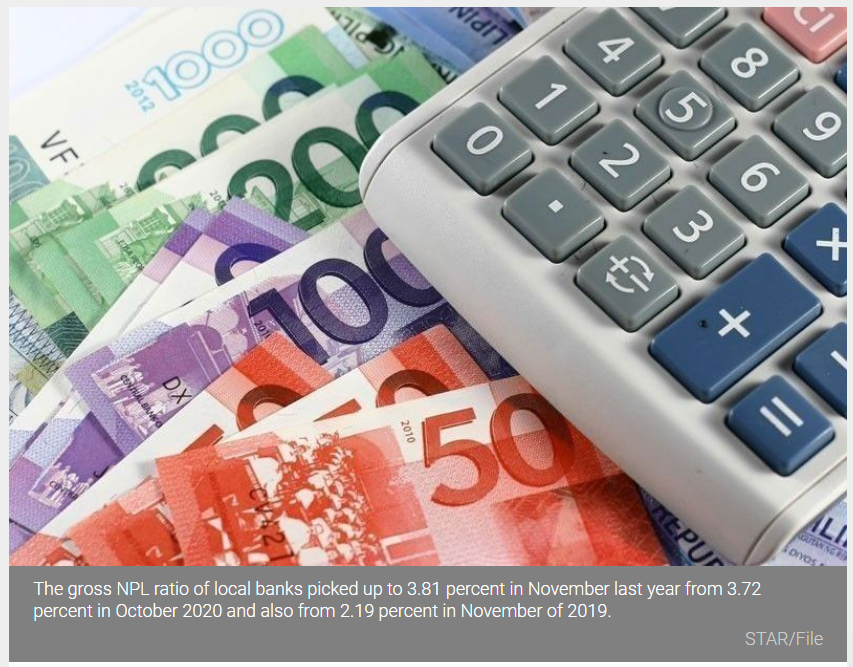Philippines: NPL ratio of banks hits 3.8%
From January to November 2020
MANILA, Philippines — The gross non-performing loan (NPL) ratio of Philippine banks accelerated for the 11th straight month to hit the highest level in more than seven years as the industry’s bad debts surged by 74 percent due to the impact of the pandemic, according to the Bangko Sentral ng Pilipinas (BSP).
The gross NPL ratio of local banks picked up to 3.81 percent in November last year from 3.72 percent in October 2020 and also from 2.19 percent in November of 2019.
This was the highest gross NPL ratio since the 3.48 percent recorded in January 2013. Data prior to 2013 are not consistent with the Department of Supervisory Analytics as the financial reporting package started in 2013.
NPLs or bad debts refer to past due loan accounts where the principal or interest is unpaid for 30 days or more after due date.
The bad loan ratio of the country’s banking industry has steadily increased since the 2.16 percent recorded in January last year due to the impact of the COVID-19 pandemic.
Statistics from the central bank showed soured loans of the banking industry amounted to a record P404.69 billion in end-November 2020, P171.62 billion more than the P233.06 billion recorded in the same month in 2019.
On the other hand, the sector’s loan portfolio slipped slightly to P10.62 trillion as of end-November last year from P10.63 trillion in the same period in 2019.
Data from the central bank showed past due loans – referring to all types of loans left unsettled beyond payment date – soared by 63.3 percent to P507.7 billion from P310.88 billion for a past due ratio of 4.78 percent.
Likewise, the industry’s restructured loans reached P139.61 billion in end-November last year, 3.4 times the P40.86 billion booked in end-November 2019, translating to a restructured loan ratio of 1.31 percent.
The level of bad debts and NPL ratio of the sector is expected to rise further as the debt moratorium expired in December.
Congress has granted a 30-day debt moratorium under Republic Act 11469 or Bayanihan to Heal as One Act, which expired last June 24 and another 60 days under RA 11494 or Bayanihan to Recover As One Act or Bayanihan 2, which lapsed last month.
Likewise, the BSP has issued a new resolution wherein the period allowing BSP- supervised financial institutions (BSFIs) to exclude loans of borrowers affected by the COVID-19 pandemic from being reclassified as part due and non-performing was shortened to end-December last year instead of end-December this year.
In anticipation of rising defaults brought about by uncertainties due to the global health crisis, data released by the central bank showed the industry allowance for credit losses surged by 65.4 percent to P352.73 billion in November last year from a year-ago level of P213.27 billion, representing a loan loss reserve ratio of 3.32 percent.
Despite the increase, NPL coverage ratio declined to 87.16 percent in November from 91.51 percent in the same month in 2019.
Source: https://www.philstar.com/business/2021/01/11/2069515/npl-ratio-banks-hits-38


 English
English




